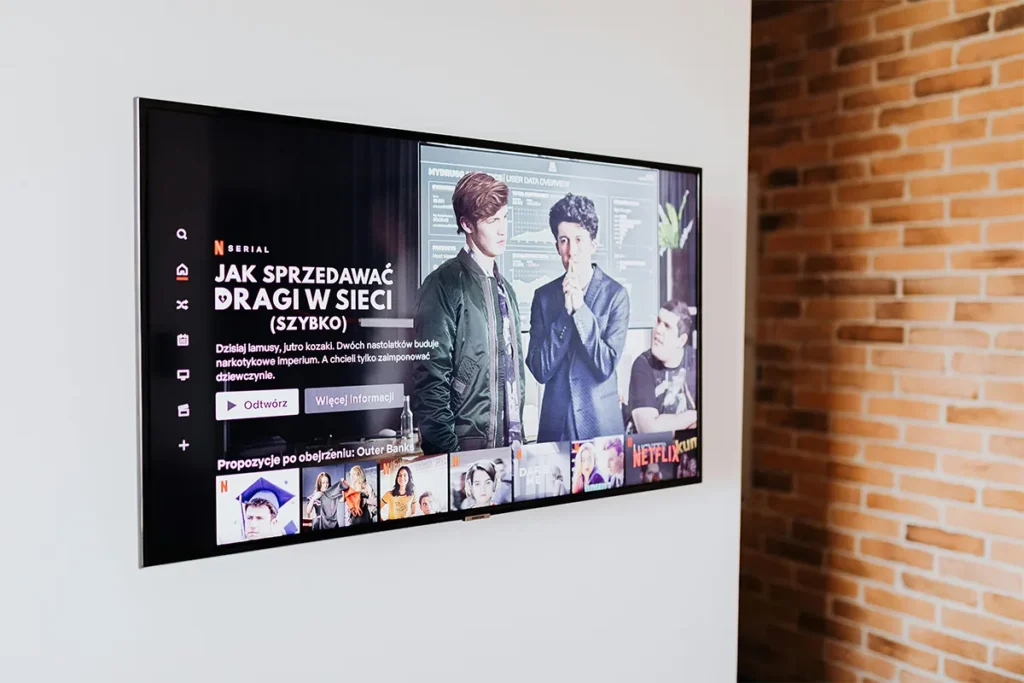As time evolves, it becomes our dire need to change our way of living and improve that at every step, or we will be left in the stone age. There were good old times when we used free TV services by installing a single antenna on the rooftops of our homes. As time passed, there came the dish and then the cables provided. Similarly, time passed, and we used TV cards and modules via computers. What do we have now? Now we have IPTVs. The trend is spreading like wildfire, and soon, they will become the mainstream TV services for viewers.
When it comes to IPTV vs Comcast, the latter stands out as it provides all the features that viewers want the most. This new technology provides us the freedom to select content, on-demand viewing options, multi-device streaming, time-shifted media, cost-effective packages, and no geographical boundaries. These are a few advantages that we get by using IPTV services as compared to traditional TV service providers.
Learn how to make IPTVs work with Comcast here. This combination will enable you to retain your Comcast connection and take advantage of IPTV.
Flexibility and Accessibility of IPTVs
1. Compatibility with smartphones, tablets, and smart TVs: IPTV has good compatibility with different devices. This flexibility helps users stream content easily on many devices. This gives users a more personal experience than traditional cable services like Comcast. Users can access IPTV on many platforms. This provides more convenience and choices for users.
2. IPTV has changed how people watch content: Users can watch content anytime and anywhere with IPTV. This flexibility makes it easier for viewers. Users do not have to follow fixed TV schedules anymore. IPTV supports many devices, which is good for people who like to watch on the go. This is helpful for people who travel or multitask.
3. Streaming from anywhere with internet access: Users can watch content from any place they have on the internet. This is better than traditional providers like Comcast, which limit content based on location. Comcast restricts some channels to specific areas.
4. Comparison to Comcast’s regional restrictions: Comcast and other traditional cable services have geographic limits. They offer fewer programming options based on location. IPTV is different because it uses the internet. Viewers can access international content and many more channels. IPTV is a good choice for people who want global access. They do not need to be tied to one region.
Cost Efficiency
IPTV is often cheaper than traditional cable services like Comcast. It has flexible pricing models and clear fees. IPTV can save money in the long term. IPTV offers different pricing options. Users can choose between bundled packages and single subscriptions. Bundles include services like internet, TV, and phone at lower prices. They attract users who want many services. Viewers who want more choices can get individual subscriptions. This allows viewers to pay only for the channels or content they want.
IPTV has a benefit over cable services. IPTV does not have hidden fees. IPTV providers usually show clear prices with fewer extra costs. Cable services like Comcast often charge extra fees for equipment rental. This makes IPTV a simpler and cheaper option.
Comparison with Comcast’s tiered pricing structure
- Price increases and ancillary charges: Comcast has a pricing structure that changes over time. Price increases and additional charges are common. Comcast and other cable providers often raise prices regularly. They also add charges like equipment fees and taxes. These can make the bill much higher over time. IPTV gives prices that stay more stable. IPTV has fewer surprise costs, which makes it easier to budget.
- Long-term savings with IPTV options: IPTV gives savings over time. IPTV has flexible plans that let users save money. Yearly plans can cut costs compared to paying monthly. Users pay only for what they need. This stops them from spending too much on features they do not use. This makes IPTV a smarter choice than Comcast’s changing prices.
Content Variety and Customization
IPTV gives viewers many options and customizable packages. This makes it a good choice compared to cable services like Comcast. IPTV provides more choices in on-demand content and channels. It stands out from cable companies.
1. Vast libraries of movies, shows, and niche channels: They usually feature thousands of movies and TV shows. They also include niche channels from different parts of the world. 1. Services like Xtreme IPTV and StreamHub offer access to over 30,000 movies, sports events, and specialized channels. These options are much better than the limited choices from traditional cable providers like Comcast.
2. Contrast with Comcast’s limited on-demand offerings: However, these services do not compare well to the variety of content on IPTV. Comcast has some movies and shows, but IPTV has much larger and more varied libraries. IPTV includes international programming and premium channels without extra fees. This makes IPTV more interesting for people who want many different viewing options.
3. Choice of only desired channels with IPTV: IPTV lets users choose only the channels they want. Users can make their own channel packages. This option is good for viewers who do not want to pay for channels they will not use. In contrast, cable services usually offer pre-selected packages.
4. Comcast’s inflexible bundling options: This choice limits the users’ flexibility. Users can add some premium channels, but they have to pay for channels they may not watch. IPTV gives users more flexible pricing and tailored packages. This makes IPTV a better choice for saving money and having a more personal experience.

Performance and Reliability
IPTV services offer access to high-definition (HD) and 4K Ultra HD streaming. This gives sharper images, vibrant colors, and better viewing experiences. To watch 4K content without problems, people need a stable internet connection of at least 25 Mbps. More IPTV services are starting to have 4K content, which provides additional premium experiences for users with devices that can handle it.
IPTV needs more bandwidth for streaming HD or 4K content. Traditional cable services like Comcast do not need as much internet speed. Comcast’s cable system gives reliable HD streaming. It has little buffering. IPTV can have problems if the internet connection is unstable. This can cause buffering and lag. The bandwidth needs for IPTV can be higher.
IPTV services can sometimes stop working or have buffering issues. This is common when internet speed changes. It can also happen at busy times. When there is strong internet, many IPTV providers reduce downtime. Using a wired Ethernet connection can help improve stability. It can also lower streaming interruptions.
Comcast is known for reliability. However, customers have complained about service outages. These outages can happen during bad weather or when there is damage to equipment. The cable is usually stable. IPTV offers more flexibility. It does not rely on physical cables but still needs a stable internet connection.
Additional Features
IPTV has many advanced features. It offers easy-to-use interfaces that improve viewing. These features give users more control and choices. IPTV can perform better than traditional services like Comcast.
- Feature-rich platforms of IPTV providers: IPTV platforms have user-friendly designs. They focus on easy navigation and features. Users can create personalized playlists and search content better. IPTV allows access to on-demand content and live TV on many devices. This gives a flexible experience, unlike traditional services.
- Comparison with Comcast’s interface: When we compare IPTV to Comcast’s interface, there are differences. Comcast’s interface is reliable, but it has less customization. IPTV allows more personalized options. Users can get tailored recommendations and choose their favorite channels. Comcast’s interface is functional but feels less flexible. This limits how users can customize their experience.
- DVR capabilities and cloud storage options: One of IPTV’s best features is its cloud-based DVR. It allows users to record live TV. Users can store content without worrying about space. This feature helps users who want to manage their recordings. IPTV often provides unlimited storage. This is better than Comcast’s DVR. Comcast usually has storage limits. Comcast also charges extra for equipment rental.
- Accessibility of viewing statistics and preferences: IPTV services often show viewing statistics and preferences. This helps users track their habits. Users can receive recommendations based on their watching behavior. Features like this improve the watching experience. Comcast offers less insight into user behavior. Comcast focuses more on fixed programming.
Learn here how IPTVs are different from TiVO, a known DVR recording company. Knowing about the key differences will equip you with the knowledge to make the right choice.
Customer Service and Support
Many IPTV providers give strong customer support. They include 24/7 live chat and email support. Sometimes, they provide phone support. Providers like Bunnystream, Worthystream, and Typhoon Labs respond quickly. Many services also have detailed FAQs. They provide setup guides to help users fix issues by themselves.
User reviews for IPTV services often say users are happy with customer support. They especially like instant chat features. But the quality of support varies. For example, IPTVGEO gets mixed reviews. Some customers say support is rude. Others appreciate the help during problems.
Comcast has many complaints about its customer service. Users often say they wait too long. They also mention poor communication. Service outages happen, especially in bad weather. Users still report problems with slow responses. Even though the company has improved, frustrations remain.
Poor customer service greatly affects Comcast’s user experience. It leads to unhappiness. Many users file complaints. The service works well when it is running. Users feel unhappy with how the service fixes problems. They compare it to the quicker support from IPTV providers.
Conclusion
In conclusion, IPTV gives a better and less strict viewing experience than cable services like Comcast. It has many types of content and high-definition streaming choices. Users like its channel packages, which they can change. It is good for people who want easy access and control. Users can watch on different devices. They can also use features like cloud-based DVR and viewing statistics. These features are good for tech-savvy people who want a better entertainment experience.
On the other hand, Comcast has some reliability. But it has problems with customer service. It also has less flexibility, like fixed bundles and fewer options to change. While it can be a good choice in places with poor internet, its customer service problems can make users unhappy. More people want better flexibility and support. IPTV is becoming more popular as a strong competitor in digital entertainment.
